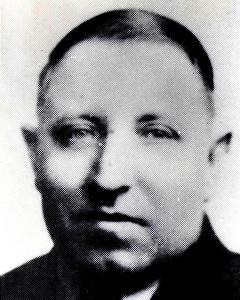Henry Gerber facts for kids
Quick facts for kids
Henry Gerber
|
|
|---|---|

Henry Gerber, date unknown
|
|
| Born |
Henry Joseph Dittmar
June 29, 1892 Passau, Kingdom of Bavaria, German Empire
|
| Died | December 31, 1972 (aged 80) Washington, D.C., U.S.
|
| Occupation | United States Army Writer |
| Known for | Gay activist; Founder, Society for Human Rights |
Henry Gerber (born June 29, 1892 – died December 31, 1972) was an important person who worked for equal rights for gay people in the United States. He was inspired by a German activist named Magnus Hirschfeld.
In 1924, Gerber started the Society for Human Rights (SHR). This was the first known organization in the U.S. to support gay people. He also created Friendship and Freedom, which was the first American magazine for gay people. The SHR didn't last long because some members were arrested. Even so, Henry Gerber kept working to improve rights for gay people throughout his life. He is remembered for his big contributions to the LGBT movement.
Contents
Henry Gerber's Early Life
Henry Gerber was born Heinrich Joseph Dittmar in Passau, Bavaria, on June 29, 1892. He moved to the United States in 1913 and changed his name to Henry Gerber. His family settled in Chicago, where many German immigrants lived.
During World War I, Gerber joined the United States Army. He worked as a printer and proofreader in Germany. While there, he learned about Magnus Hirschfeld's work to change unfair laws in Germany. Gerber visited Berlin, a city that had a lively gay community. He learned many ideas from Hirschfeld. After his military service, Gerber returned to Chicago and worked for the United States Postal Service.
Starting the Society for Human Rights
Inspired by Magnus Hirschfeld, Henry Gerber decided to create a similar group in the United States. He named his group the Society for Human Rights (SHR). Gerber applied for the group to become a non-profit organization in Illinois.
The SHR's goals were to help people who were treated unfairly because of who they were. They wanted to share facts from modern science to fight against public unfairness. The group promised to follow all laws and work for the good of everyone.
An African American clergyman named John T. Graves became the president. Gerber, Graves, and five others were listed as directors. The state approved their application on December 10, 1924. This made SHR the first known organization in the U.S. to support gay people.
Gerber also started Friendship and Freedom, which was the SHR's newsletter. It was the first American magazine known to be for gay people. Only two issues of Friendship and Freedom were published.
Henry Gerber's Later Years
After the Society for Human Rights ended, Henry Gerber moved to New York City in 1927. He joined the Army again and worked in an office. This type of work allowed him to stay in the Army until 1945, when he left with an honorable discharge.
In the 1930s, Gerber started a pen pal service called "Connections." Most of its members were heterosexual, but it helped people connect. He also wrote articles for different magazines, sometimes arguing for gay rights. He often used the pen name "Parisex" when writing about these topics. Gerber continued writing for 30 more years.
In the mid-1940s, Gerber moved to Washington, D.C.. In 1953, a magazine called ONE published a letter from Gerber. In it, he shared the story of the Society for Human Rights. Later, in 1962, ONE published a full article by Gerber, giving a detailed history of SHR.
Gerber wrote many letters to other gay men, discussing how to organize and respond to unfairness. He was an early member of the Washington chapter of the Mattachine Society, another group working for gay rights.
Henry Gerber spent his last years at the Soldiers' and Airmen's Home. He worked on his life story and translated German novels. He passed away on December 31, 1972, at the age of 80. He was buried in the nearby United States Soldiers' and Airmen's Home National Cemetery.
Henry Gerber's Legacy
Henry Gerber has been honored for his pioneering work. In 1992, he was added to the Chicago Gay and Lesbian Hall of Fame. The Henry Gerber House in Chicago is where he lived when he founded the SHR. It was named a Chicago Landmark in 2001 and a National Historic Landmark in 2015.
The Gerber/Hart Library in Chicago is named after Henry Gerber and Pearl M. Hart, another early civil rights defender.
Gerber's work connects the early gay rights efforts in Germany to the American movement of the 1950s. His actions helped inspire others, like Harry Hay. Hay later founded the Mattachine Society in 1950, which became the first lasting LGBT rights organization in the United States.

